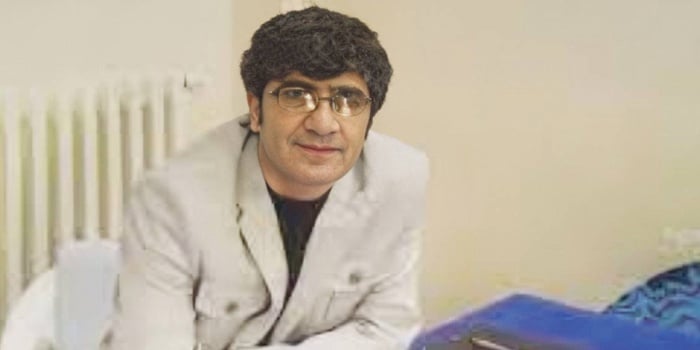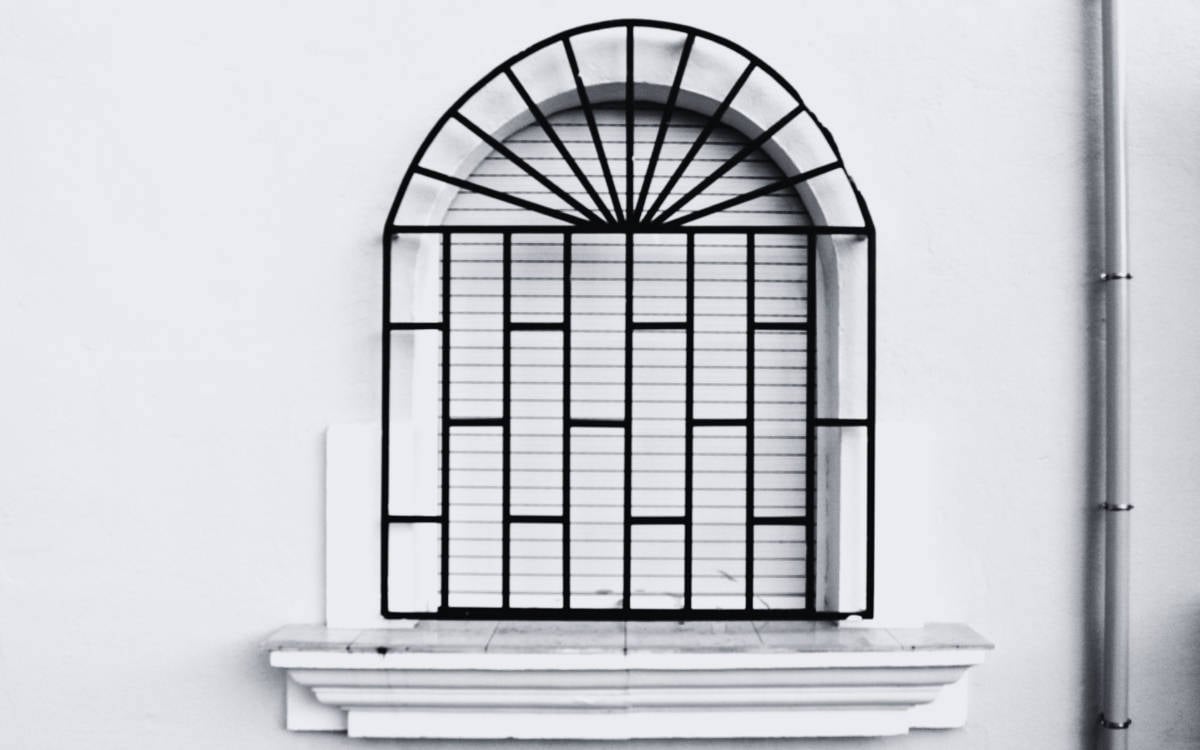We share with bianet readers the letter of author and 27-year prisoner Zeki Bayhan, which was read out during the “Isolation in Prisons: Individual and Social Impacts” panel on Jan 5, 2024 at the İzmir Bar Association Conference Hall.
Hello,
Sending love and respect to all of you. I salute your commitment to raising awareness on the hidden yet significant societal issue of isolation, especially in an environment where the current oppressive political regime has turned the country into a vast prison.
I understand that you, too, are not truly free, and I worry that if you continue to care about issues like these, your own experience of isolation might deepen. After all, nowadays, anyone who doesn’t align with the ruling powers faces the real possibility of imprisonment. Not long ago, a young friend who had just been arrested remarked after joining in on a chant with many others, “Oh, I actually feel freer here—I’d be arrested for chanting like this on the outside.”
I wonder what kinds of images the concept of isolation conjures up for people outside. When asked to write something on isolation, my first thought was, “What is there to say?” Not because there isn’t much to say—on the contrary, there is so much, and it’s so devastating. What to convey, and how? And there’s always the question of how much of it can be understood. Isolation, when fully considered, is so inhumane that it seems outside the realm of normal human perception and experience, making it challenging to grasp.
For this reason, I feel as though I’m speaking to you from behind a distant window. Isolation, after all, is the absence of windows. In isolation, all windows face inward, forcing a person to confront only themselves—a method of slowly destroying one’s own psyche. Isolation compels you to see, hear, and feel only yourself, creating a suffocating, spiraling torment. You feel like you’re being pulled into a vortex, crumbling and collapsing onto yourself.
Windows
Isolation indeed lacks outward-facing windows, but those who resist can find ways to create small openings in the walls. You know, when you press your face against a tiny opening, that small hole expands, becoming a window. I will try to open a few such windows to help you glimpse the inner workings of isolation. I know it’s hard to see the darkness inside from the light of the outside world. But if you press close enough, perhaps… Let’s begin.
Window 1: Isolation is often understood as confining a person between four walls, analyzed and critiqued within this framework. But this is merely the observable side of isolation. Space and architecture are where isolation occurs, but they are not isolation itself.
True isolation is not limited to physical confinement. The objective is to imprison the mind within the body. This is the destructive core of isolation. The physical separation, along with the prison’s surveillance technologies and regulatory procedures, all aim to achieve this. In isolation, the detainee’s attention, sensitivity, concerns, and fears are directed inward. The moment someone falls into this trap, they begin to chip away at themselves, wearing themselves down. Isolation is a policy of dismantling a person by their own hand—physically, ideologically, and psychologically, ending in collapse.
Window 2: From the harshest forms of isolation to its softer shades, the goal remains the same—to break a person down psychologically, emotionally, and mentally.
Being alone or with one or two others in isolation does make a difference. Hearing another’s voice besides your own is comforting. But over time, even those sharing the space gradually lose their individuality and distinctiveness. The confined quarters lead people to internalize each other’s every action and reflex until their differences vanish. Over time, they become extensions of the isolation system, turning solitary confinement into confinement with three people. And at times, such shared confinement can prove even more arduous.
Window 3: Isolation punishes a person with both the presence and absence of other people, creating a systematic breakdown. Solitary isolation punishes with aloneness, and you find yourself longing to hear a different voice. Conversely, in group isolation, you are punished by the constant presence of others. I wonder if you can understand the torment of not having a single moment to yourself for years on end.
Imagine not being able to walk away when you’re upset, not having a separate room to retreat to when you’re overwhelmed by others, or not finding a quiet corner to rest in when your head is throbbing with pain.
Endless repetition
Window 4: Life in isolation is based on infinite repetition. Every day is a copy of the one before. Imagine living the same day repeatedly for 10, 20, even 30 years. You begin to feel as though you’re suspended in time, your sense of time slowly eroding.
Consider this small thought experiment: ask someone who has spent a year in military service or at university about their memories; they’ll have much to tell. Now ask someone who has spent 20 or 30 years in prison. They’ll likely stay quiet because, for 20 to 30 years, they have been living the same day over and over again.
Window 5: Living with such infinite repetition gradually transforms thought into habit. When every day is a mirror image of the last, constant rethinking becomes unnecessary. Habit, of course, originates from a single thought—the mind has reasoned through it once, encoded what’s required, and every day thereafter, it’s simply replayed.
In isolation, habit turns life mechanical. Often, you do things without thinking. Sometimes a question flits through your mind: “Did I do that?” You turn to check and find that, yes, you did—without conscious thought.
People often assume that those in prison spend a great deal of time thinking. Yet this is rarely a true analytical process; rather, it’s a back-and-forth among fragmented, melancholic thoughts, dipping in and out.
As I mentioned earlier, isolation imprisons the mind within the body, binding it in a web of habit.
Window 6: It’s misleading to think of isolation as a series of individual actions or conditions. Isolation is a system, a complete set of practices, and each part takes on meaning within this broader context. The way a prisoner perceives these practices is often entirely different from how someone outside might view them.
Take, for instance, the twice-daily headcount. The state would tell you it’s for security: “We have to count for safety reasons.” To someone outside, that explanation might seem reasonable, harmless even. But to a prisoner, the count serves as a twice-daily reminder that they are nothing more than inventory, a mechanism to keep their sense of nothingness alive. Now, consider—whose perception aligns more closely with reality here? The state’s, or the person in isolation?
And remember: even as prisoners are surveilled around the clock through every possible technological means, there’s still the need for a physical count to confirm they’re in their cells. Just how essential to security could this additional practice be?
Resistance
Window 7: Isolation also takes a psychological toll on prison guards. Those who enforce inhumane measures cannot remain unaffected. They too slowly become hardened in their roles. The prison system is aware of this, which is why guards who interact with attorneys and family members are often different from those who interact with inmates. The prison has two faces: one that looks outward and one that looks inward. These “windows” do not bring light in but instead send darkness out, so to speak. For now, I’ll leave it here, even though I’ve only just begun.
I’d like to conclude with a few final thoughts on the other side of this coin. Yes, isolation is indeed a dark and oppressive experience, ensnaring one in a web of nothingness and gradually overwhelming the mind and emotions. Yet, despite it all, resistance is possible. To resist isolation, one must capture and grow any glimmer of light within the darkness. Political prisoners are able to do this.
Resistance is multifaceted. For example, if a prisoner who has endured isolation for 10 or 20 years can still write an article on current politics, that is significant. The intellectual content of the writing is important, of course, but even more valuable is the fact that despite years of isolation, they have not lost touch with the struggle of their people and can still voice thoughts on current political issues. This is a clear sign that human will can overcome isolation.
Political prisoners remain active political actors, even while incarcerated or isolated. When a political prisoner’s status as a political subject engaged in struggle shifts to that of a helpless victim, the process of psychological breakdown begins. This is a trap, one that has unfortunately ensnared some. When political prisoners are stripped of their political identity and connection to their cause, they are left merely as victims. And this is exactly what the system of isolation aims to achieve.
Breath
Changing the isolation regime in prisons would require a shift in the broader political system, which is a long struggle demanding time and persistence. This means that isolation is not likely to end immediately. In the meantime, small gestures or acts of support can provide relief, even if only slightly, to political prisoners who continue to resist.
The people who experience the most intense isolation are political prisoners serving aggravated life sentences. In my facility alone, there are about nine of us, with roughly 20 in total in our prison complex. If each patriot, revolutionary, or democratic-minded attorney were to take up the legal representation of just one of these prisoners and arrange a single one-hour meeting every three months, it would provide these individuals with a small yet vital respite.
Likewise, for those who are not attorneys and therefore cannot visit, becoming a pen pal to one of these prisoners, or sending a book or two every few months, would also offer a bit of fresh air to someone struggling within the system.
Are such gestures really that difficult? I leave the answer to you. I’ve made my suggestion.
When we resist, we must start by addressing the harshest corner of isolation and remember not to forget those who are there. Isolation may be cold, but the spirit of resistance is warm. With the warmth of those who resist, I send my greetings to you all with love and respect.

Letters to Zeki Bayhan can ba addressed to: Buca Kırıklar 2 No’lu F Tipi Kapalı Cezaevi, İzmir.
(ZB/VK)






